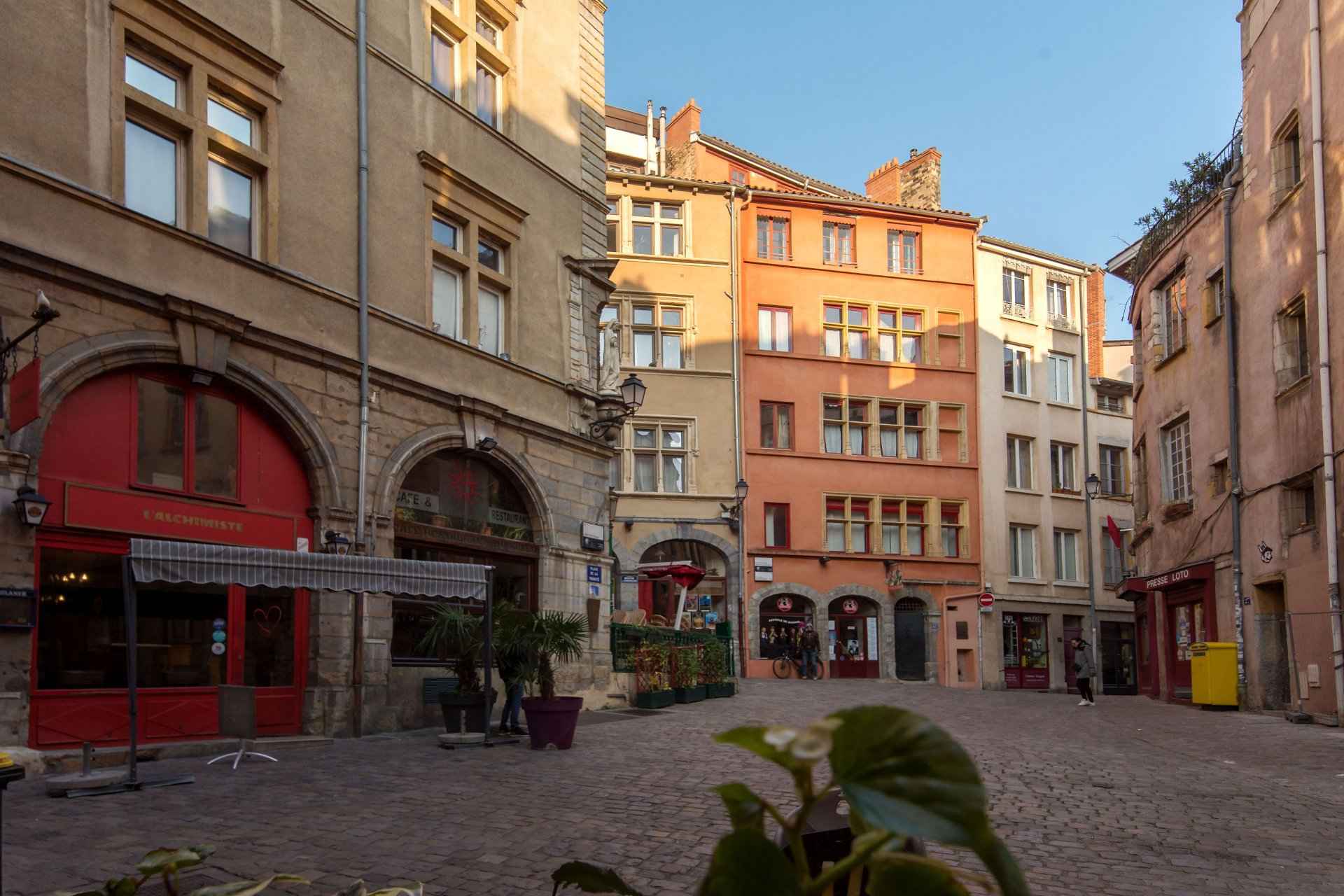The origins of the Vieux-Lyon district
The Vieux-Lyon district represents one of the largest ensembles in France classified by UNESCO and bears witness to the medieval and Renaissance history of the city. The Vieux Lyon district is in the 5th arrondissement on the banks of the Saône to the west of the Lyon peninsula and the Terreaux district and to the east is the hill of Fourvière. Vieux-Lyon is made up of the districts of Saint-Georges, Saint-Jean and Saint-Paul.
Vieux-Lyon was added to the UNESCO World Heritage List in 1998 and as such is also part of the World Heritage Sites. In 1964, it also became one of the first French neighborhoods to be registered as a protected area. The southern part of Vieux-Lyon, built around the Saint-Georges church, retains its heritage as an artisan district where Traboules, silk shops and accommodation rub shoulders. The Saint-Jean district, which is the main aristocratic and religious district of Old Lyon, has become a privileged axis for museums and tourist attractions. As for the surroundings of Saint-Paul, the main bourgeois district but also the financial and commercial center of Old Lyon, they have been converted to trendy and decoration shops, antique dealers or even fashion boutiques. On the other hand, the charming hotels, the elegant restaurants and the trendy bars of the district are installed on the side of the residential districts like Fourvière or Saint-Just.
The essentials of Old Lyon
Highly touristic, Old Lyon is full of emblematic streets, squares and historical monuments of interest. A lively district, it is animated by the many traditional corks, antique shops and renowned restaurants that line it. The Vieux-Lyon district is made up of majestic religious buildings, in particular the Primatiale de Saint-Jean, dating from the 12th century, the church of Saint-Georges, the church of Saint-Etienne, the church of Sainte-Croix or the church of Saint-Paul, testimony to neo-Gothic architecture. Other remarkable buildings in Vieux-Lyon still bear the imprint of the Renaissance period in the district, such as the pink tower, the Bullioud hotel or the emblematic temple of Change. But also representative streets of Vieux-Lyon such as that of Juiverie, du Boeuf or rue Saint-Jean offer architectural curiosities: well-preserved medieval facades, large period bourgeois houses including the Chamarier house, the lawyers or the house of Guignol.
Living in the Old Lyon district
Living in the heart of Old Lyon means living in a historic district in which you immerse yourself in the history and culture of the City of Light. In terms of amenities, Vieux-Lyon has a lot to offer, with plenty of shops, restaurants, bars and museums. The area is very well served by public transport. Characterized by its cobbled streets, its stone buildings and its traboules, covered passageways that connect the interior courtyards of the buildings, the Vieux-Lyon district is very popular. In addition, its historic charm and central location are undeniable assets. In terms of real estate, there are mainly old apartments and town houses with undeniable charm. Real estate prices are often higher there than in other areas of the city.Your consultants in the sector




